February 1942 – War Comes Close to Home
by David Radcliffe
Eighty years ago this month, the Second World War came very close to Port Melbourne. Early in the morning of February 26, 1942, a small float plane, launched from a Japanese submarine, conducted a reconnaissance flight around Port Phillip Bay, observing the port and other facilities.
That morning, Marlene Firman and her younger sister, Gloria, were sound asleep at 158 Gladstone Street in the Montague area of South Melbourne, when their father, Cecil, rushed into the house and dragged the girls out of bed. He had just finished on the night shift at the Dunlop Rubber factory in nearby Normanby Rd and had seen the Japanese float plane flying around. He hurried the girls out of the house, asking their mother, Jean, not to turn on the lights. As they all emerged onto the street, the plane flew right over the top of them heading in the direction of St Kilda. Marlene also recalls hearing guns firing. She was just six days shy of her ninth birthday when this drama unfolded.
This account is based on a 2016 oral history interview with 83 year-old Marlene Bailey (nee Firman)1.
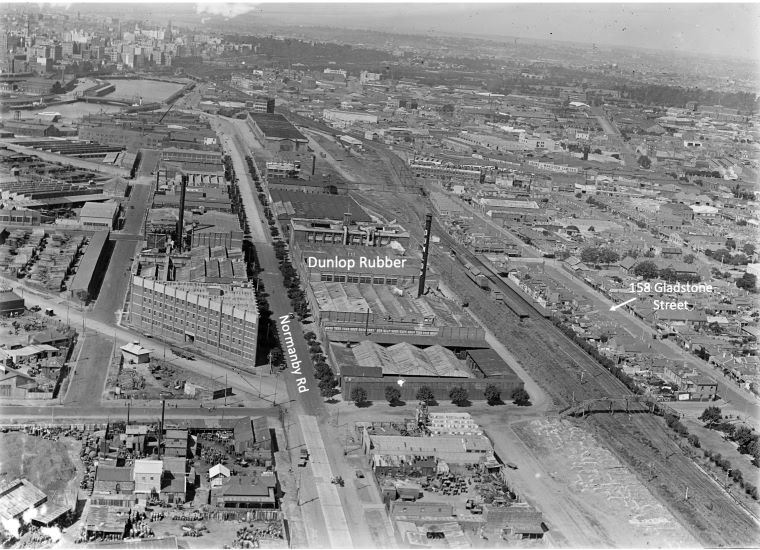
Yet these childhood memories do not capture what must have been going on in the minds of her parents and other adults back then. Early 1942 was a time of heightened anxiety in Australia with growing fears of a Japanese invasion. Leading up to the reconnaissance flight, there was a drum beat of disheartening news. On November 19, 1941, the HMAS Sydney had been sunk off the coast of Western Australia with the presumed loss of all of her 645 crew. Immediately following the December 7 attack on Pearl Harbour, Japanese forces moved into the Malay peninsula and there followed a series of defeats as they advanced steadily towards Singapore. On December 10, the battleship HMS Prince of Wales and battle cruiser HMS Repulse were sunk by Japanese aircraft off the coast of Malaya. At the end of 1941, the traditional shutdown of industry and most offices between Christmas eve and 2nd January, was reduced to just a three-day break.
In late December, Prime Minister Curtin set forth the challenge facing our nation.
The year 1942 will impose supreme tests. These range from resistance to invasion to deprivation of more and more amenities. … Australians must realise that to place the nation on a war footing every citizen must place himself, his private and business affairs, his entire mode of living, on a war footing.2
Then the unthinkable happened. The British bastion of Singapore fell on February 15, 1942, an event described by Curtin as “Australia’s Dunkirk”. Four days later, the first air raid on Darwin took place.
This brings us back to the Japanese aircraft that flew over Melbourne on February 26, 1942. The event was not reported at the time, and only appeared in the press at the end of the war, and even then, there was scant detail.3 The full story of this reconnaissance flight first appeared in 1992, the year after author David Jenkins interviewed the pilot of the plane, Nobuo Fujita, who was then 80 years old.
Generally accepted as the definitive account of events, parts of it have been reproduced on many web pages. During February and March 1942, the Japanese Imperial Navy conducted a series of reconnaissance flights over cities in the South Pacific – Sydney, Melbourne, Hobart, Wellington, Auckland, and Suva. These flights were launched from the I-25, a large submarine, three times the displacement of a German U-boat and one and a half times that of a contemporary US submarine.5 It carried a single engine floatplane, the Yokosuka E14Y, which had the Allied designation, ‘Glen’. The plane was broken down into twelve pieces – fuselage, wings, floats, propeller, etc. – and stowed in a watertight, semi-cylindrical ‘hanger’ forward of the conning tower of the I-25. Before each reconnaissance flight, the submarine crew reassembled the plane with the aid of a jib crane. It was then launched using a catapult mounted on a 20m long ramp on the forward part of the submarine deck.
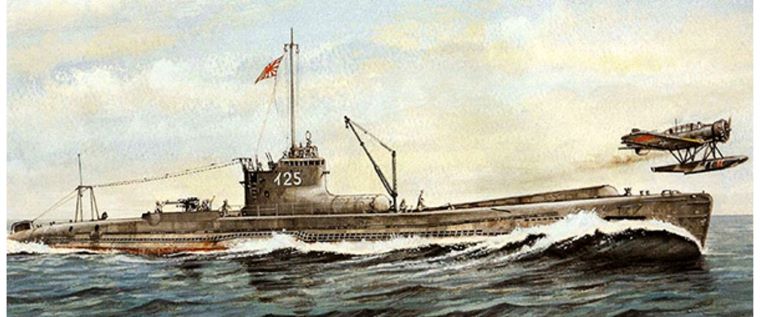
In the early hours of February 26, the I-25 surfaced off the northern tip of King Island in Bass Strait and the float plane was readied for flight. It took off before dawn, piloted by Warrant Officer Nobuo Fujita with Petty Officer Shoji Okuda in the rear seat as observer. They flew north using the Cape Otway lighthouse as a beacon, then followed the surf coast until they picked up the Port Lonsdale lighthouse. Avoiding the defences there, they turned more northerly, crossed the Bellarine Peninsula, over Portarlington, then continued towards Melbourne.
Flying in heavy cloud, Fujita descended to get a sighting only to emerge right over the RAAF base at Laverton at 6:45am. Several planes were scrambled but Fujita disappeared back into the clouds and no contact was made. Anti-aircraft gunners at Williamstown spotted the plane and were ready to fire but the officer in charge delayed while he sought permission from headquarters, and the moment was lost. Fujita flew along the Yarra at an altitude of 300m, past Port Melbourne and South Melbourne, and then down to St Kilda, Brighton, and Sandringham.
He observed ship repair facilities and a line of warships steaming on the bay and was taken by the variety of colours of the roof tiles and the beauty of the countryside. Completing the mission, Fujita set course for Cape Schank on the heel of the Mornington Peninsula, and then tracked south-west to Cape Wickham on the tip of King Island to rendezvous with the I-25. The duration of the flight would have been around 3 hours.
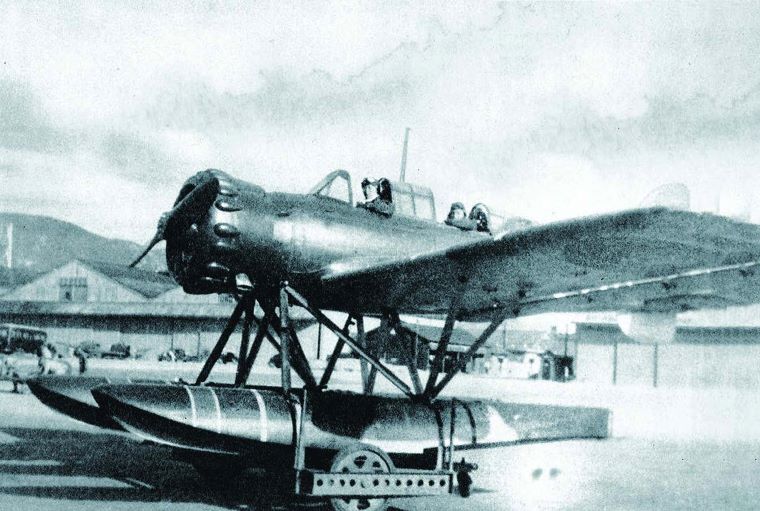
While Fujita relied heavily on lighthouses to navigate around the coastline to get to the city and back, did he also have access to a copy of the Japanese map of the Port Melbourne area based on the 1937 Admiralty chart?6 It is worth noting that if the mission had been conducted a few months later they would likely have been detected by the radar station that was installed at Cape Otway in June 1942.
In America, Nobuo Fujita is remembered, with honour, as the only person to have bombed the contiguous United States during WW2. In September 1942, operating from the I-25, his Glen float plane dropped two incendiary bombs in forested country near Brookings, Oregon, intended to set off fires and create panic. The relationship that developed during the post-war years between Fujita and the citizens of Brookings is a fascinating story of remorse, reconciliation, and commemoration.7 This story is the subject of a widely read children’s picture book.8
Our memories of dramatic events in our formative years can remain vivid. However, as these only reside in our minds, they are lost forever if not recorded, preserved, and retold.
Postscript – in September 2023 we received a comment from John Marion (see below).
During WWII, John’s father Frank worked for the Department of Defence supplying munitions to the gun batteries that protected the defence factories in the Maribyrnong area. An anti-aircraft gun, located roughly where the Highpoint Carpark is now, fired at a plane passing over the area on 26 February 1942. Subsequently John’s father was given an empty shell from that day. John also told us that an old family friend remembered it produced a hell of a bang and dropped shrapnel over West Footscray. John still has the shell and sent the following photos.
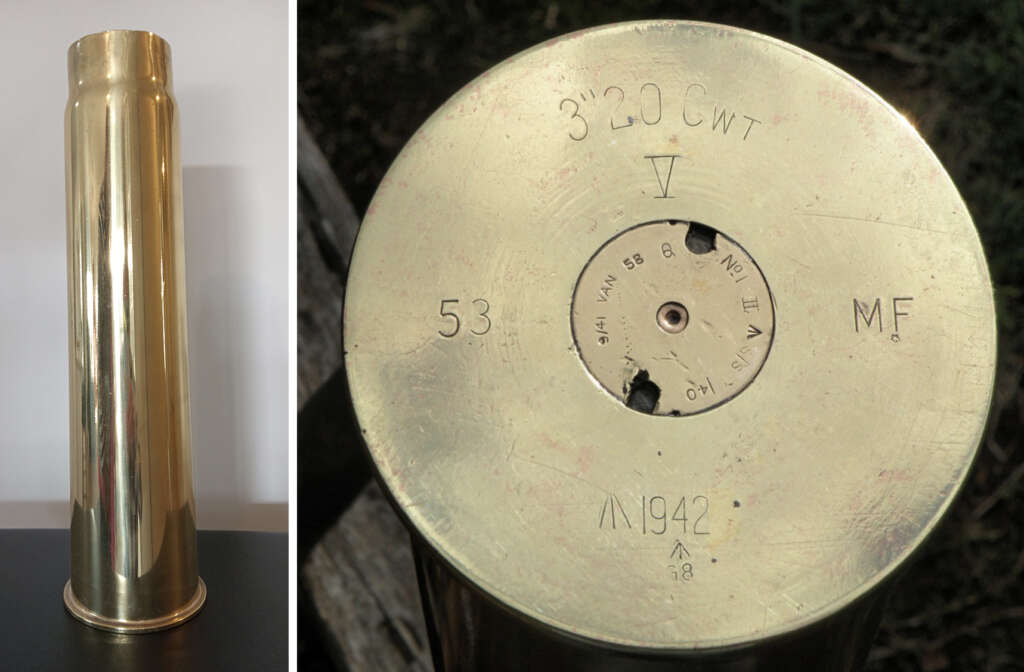
1 Marlene Bailey (nee Firman), April 24, 2016. Interview conducted by Steve Tserkezidis and Janet Bolitho. Digital audio file, PMHPS. Also Montague: A Community Lost and Found, Traces films 2019, 34 min. https://montaguecommunitylostandfound.com.au/films, Accessed 12 February, 2022.
2 ‘The Task Ahead’ (1941, December 27). The Herald (Melbourne, Vic.: 1861 – 1954), p. 10. Retrieved February 12, 2022, http://nla.gov.au/nla.news-article245352066.
3 ‘Jap plane over Melbourne in 1942’, (1945, August 20). The Argus (Melbourne, Vic: 1848 – 1957), p. 3. Retrieved February 12, 2022, from http://nla.gov.au/nla.news-article968085
4 David Jenkins (1992), Japan’s submarine war against Australia 1942-44, Random House Australia, pp. 127-151. Jenkins also interviewed Tatsuo Tsukudo who was the Executive Officer on the I-25 mission.
5 The I-25 was larger even than Australia’s current Collin class submarines.
6 Map of Port Melbourne with Japanese annotation based on 1937 Admiralty Chart, http://handle.slv.vic.gov.au/10381/114192 Accessed 12 February 2022. PHMPS also has a copy of this map.
7 Derek Hoff (1999) ‘Igniting Memory: Commemoration of the 1942 Japanese Bombing of Southern Oregon, 1962- 1998’, The Public Historian, Vol. 21, No. 2 (Spring, 1999), pp. 65-82.
8 Marc Tyler Nobleman (2018) Thirty minutes over Oregon: a Japanese pilot’s World War II story; illustrated by Melissa Iwai. Clarion Books: Boston.

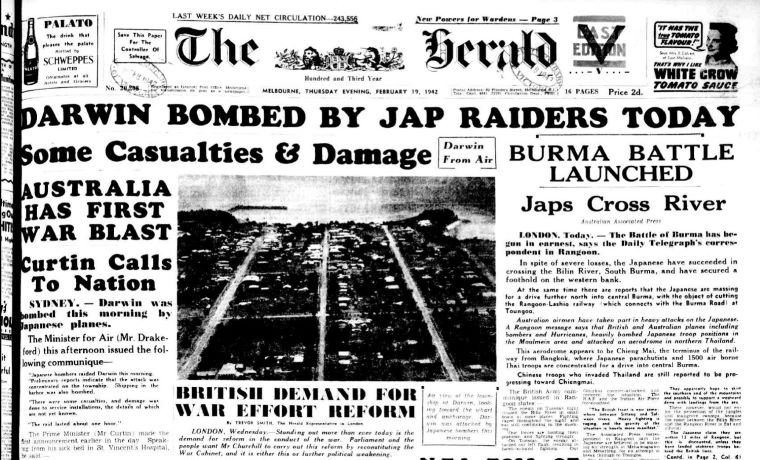

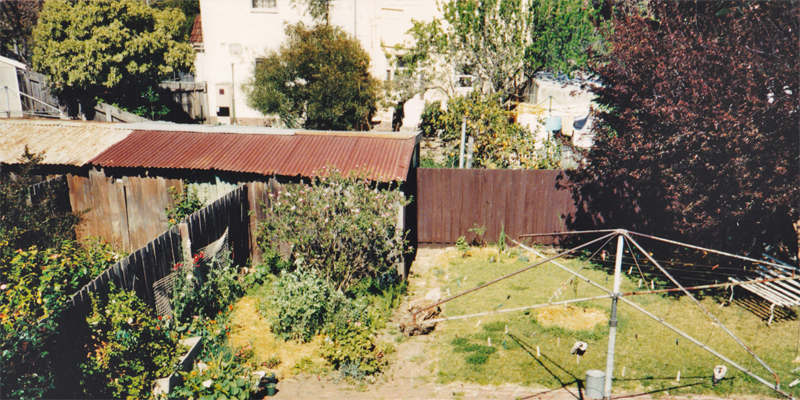
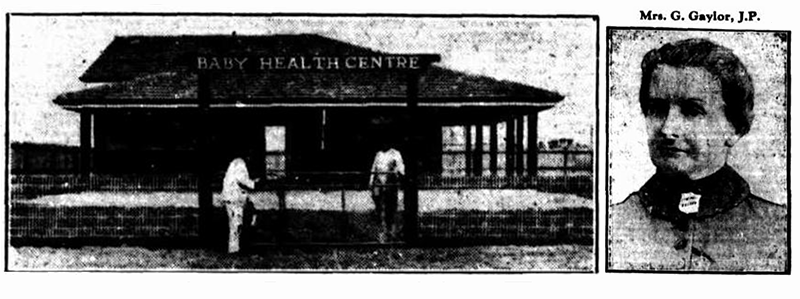
4 Comments
wch
Excellent interesting history, well done. I wonder what type of planes the RAAF had to scramble to try and intercept the intruder? P40s maybe, I would be interested to know
David Radcliffe
There is no definitive answer but based on various reports it was most probably CAC WIrraways that were scrambled from Laverton.
John Marion
I remember my father telling me that he supplied the munitions to the gun batteries that had been set up to protect our defense factories in the Maribyrnong area. He was employed by the Dept. of Defense. After the gun at Maribyrnong had fired at the aircraft flying over the area on Feb 26 1942, he was given one of the empty AA shells, a 3inch brass shell, which I still have in my possession. I can provide photos of the shell stamped MF 1942 3″20cwt on the base. A friend of the family who passed away many years ago told me of the morning it happened and the sound of the gun firing followed by the shrapnel dropping out of the sky over West Footscray.
David Thompson
Thanks John,
That’s an amazing connection to that day. I’ll contact you separately regarding seeing those photos.